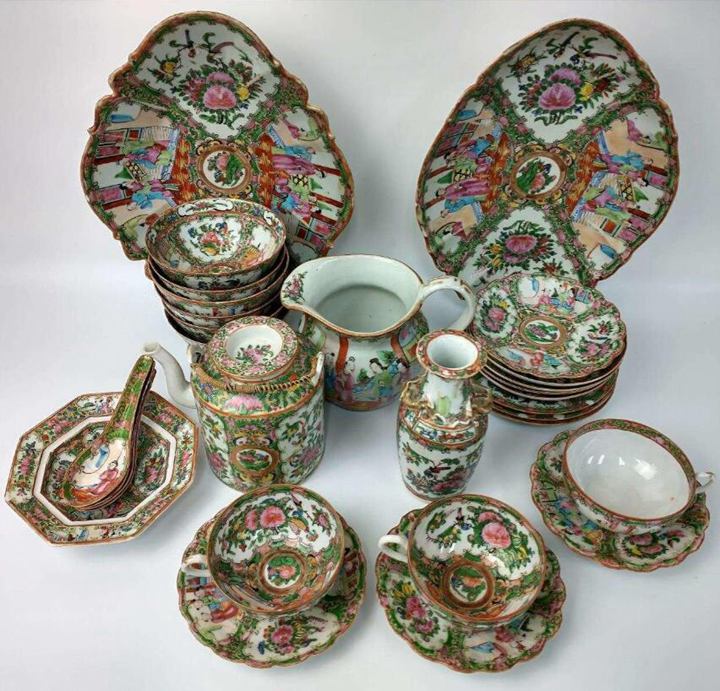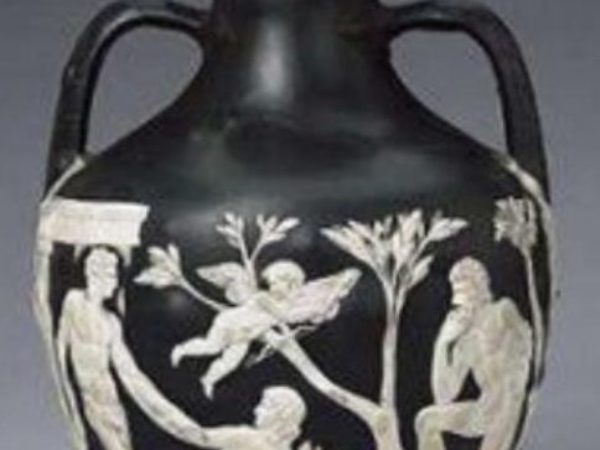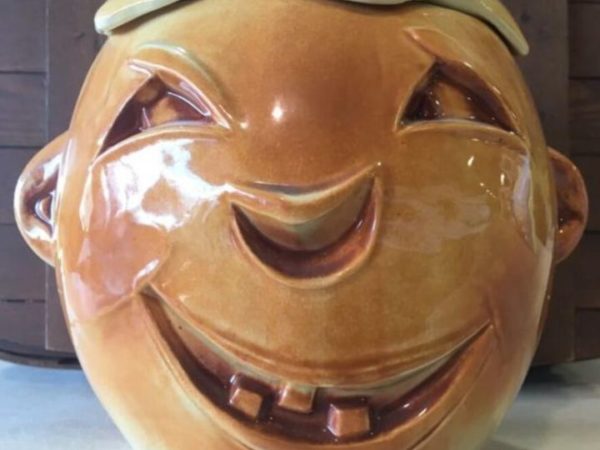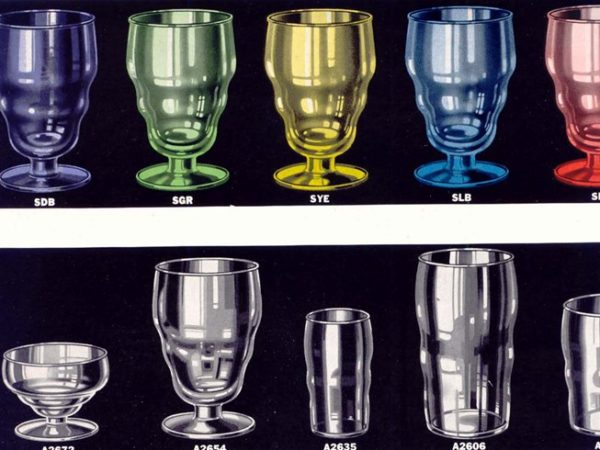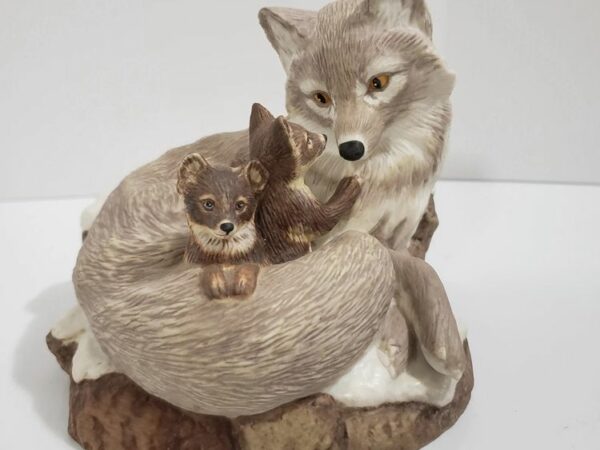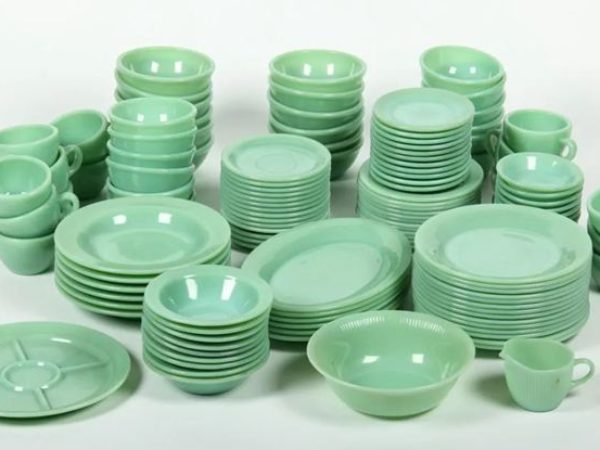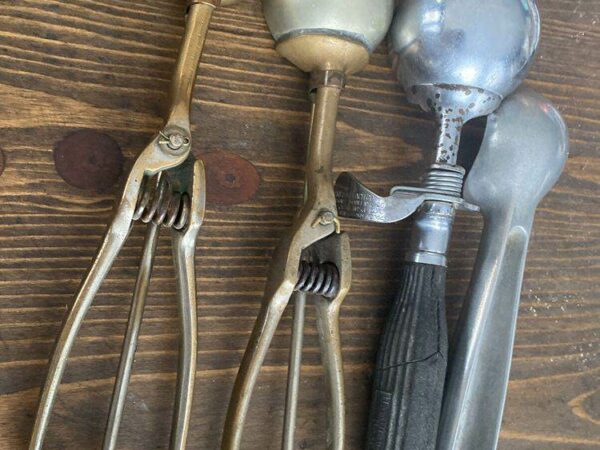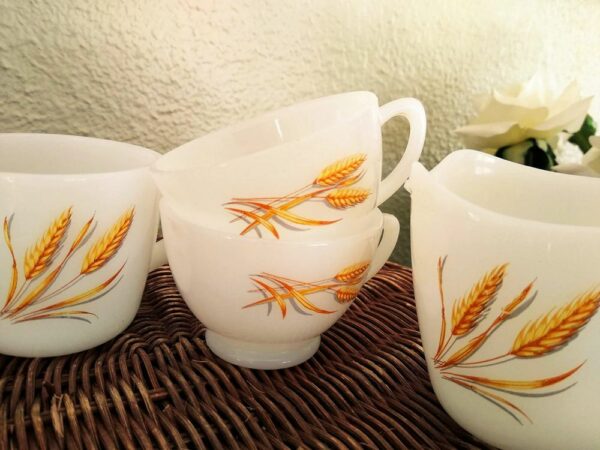If you’re into all things unique and ancient or someone passionate about collecting prized possessions, you’ve come to the right place. The Rose Medallion China is one of the most popular export items from the 1850s and we’re here to help you identify it accurately.
Table of Contents
Introduction
Europeans fell in love with the intricate designs and delicate execution of art being portrayed within the confines of creamy porcelain dishes, especially the ones depicted by the Chinese Rose Medallion.
Antique porcelain has never been out of fashion since then.
From the early 18th century until today, antique porcelain has been a cult favorite for designers and collectors alike.
The whimsical garden sceneries and beautiful scenery painted with soft, pastel colors prove to be eye-catching and appealing to the customer.
They also have a telepathic way of connecting with the buyer. The design and subtly tinted artwork are reminiscent of a glorious era.
The Rose Medallion China, in particular, evokes feelings of intense nostalgia!
This style of Chinese pottery had captivated all of Europe and America for more than two centuries.
The Rose Medallion China is still a common finding among antique shops and even everyday households. It is proudly displayed in living spaces and avidly collected for all to admire.
If you are new to the game of Chinese porcelain, then stick around to find out more about its history and evolution throughout the centuries.
With such a dense and active online market, scams are likely to arise. We wouldn’t want you to end up with a fake or dupe piece of fabricated porcelain. This blog post expands on essential key points and noteworthy tips and tricks to keep you updated and aware.
If you come across a suspected piece of Rose Medallion China, you’ll be sure to identify it after reading this comprehensive guide!
A Brief History of the Rose Medallion China
For centuries, Chinese porcelain export has been famous amongst collectors, treasure hunters, and interior designers. The Rose medallion pattern of porcelain first emerged in the 1850s, and it was largely exported to Europe and America due to increased demand.
The Europeans, in particular, were huge fans of the painting and intricate designs displayed on this piece of porcelain.
The first production of Chinese enamel porcelain was infused with shades of pink and red. It was also painted with a variety of enamels in green, purple, blue, and yellow.
The name given to this pattern of porcelain was not because it consisted of an actual rose, it was named rose medallion because of the color. Hence the term ‘Rose Medallion’ emerged.
This term is also pertinent to porcelain itself because it has similar characteristics and patterns to that of a rose. Porcelain is grouped under the category of Famille Rose, which is french for The Rose Family.
The actual flower painted on this porcelain is, in fact, the national flower of China, a peony! It only makes sense that the Chinese would incorporate their national flower into their designs that would soon be circulating in the international market.
It showcases economic growth, empowerment, and stability.
The Chinese Export
During the early 18th Century, the main port used for export and trade was Canton, South China. Canton was not just important for business, but it was also the place where Chinese Porcelain was re-fired and painted, ready to be exported.
This is also a reason why many patterns similar to Rose Medallion are referred to as Rose Canton.
How Is The Rose Medallion China Made?
Porcelain is made out of Kaolin, a material made out of granite and petuntse. These ingredients are ground and mixed together with water to form a dense clay-like texture.
This robust texture is responsible for imparting porcelain with its luster and durability.
Highly skilled labor is needed to produce porcelain as it involves numerous steps that require precision and skill. The temperatures in the kilns need to be monitored as high temperatures are necessary to convert the clay into porcelain.
The undecorated porcelain bodies are termed as ‘biscuit-form’.
The biscuit form is then glazed thoroughly before being painted with the intricate patterns derived from the rose family.
Once the glazing and painting process is complete, it is time to re-fire the porcelain to seal everything within the structure. This technique is also called polychrome decoration.
Colors such as cobalt blue were painted before undergoing the process of re-firing; this technique is called under-glaze decoration.
Most rose patterns that were produced in the early 18th century were over-glazed. Later, both techniques were often used in combination.
How Did The Chinese Porcelain Evolve?
Before The Chinese Rose Medallion was popularized, China mainly traded silk and tea with the western borders.
The export of Chinese porcelain started in the 15th Century, and it was mainly made for the European population in silver and gilded pieces.
By the early 16th century, Chinese potters started specifically targetting the demands of the West and, therefore, started producing porcelain with a typical blue and white design. This pattern remained unchanged till the 17th century.
The Chinese porcelain industry started evolving during the late 18th century and came up with new, fresh designs, patterns, and styles more suited for the Western market.
Among these new designs was the Rose Medallion. This particular pattern gained popularity and remains in demand to this day!
Classification of The Chinese Rose Medallion
Types of Patterns & Designs
An array of different patterns and similar designs are grouped under the term Famille Rose (also known as the rose family), but all these patterns have notable differences.
Let’s look at some of these differences in detail.
It is essential to note that all these designs feature the color pink expansively.
Rose Medallion
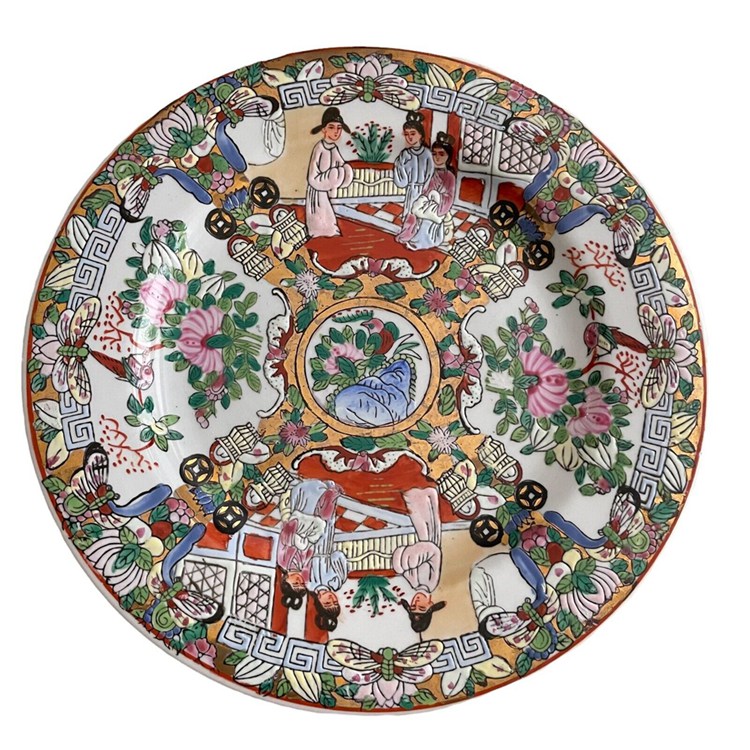
This pattern was the most popular export pattern.
It consists of a central medallion, usually a bird or peony, encircling four or more panels of flowers, birds, or people.
The panels are referred to as reserves and are often demarcated by intricate margins laced with green or pink florals. The spaces between the reserves are filled with butterflies, bats, and florals.
This pattern rose to fame in America, so much so that Ulysses S. Grant and his wife ordered them in a large quantity, and President James Buchanan even had his initials placed as the central medallion.
Rose Medallion reached its peak in the 19th century, but it remains popular to date!
Although the pattern has somewhat changed over the years, some scholars would even say that it has rather devolved as the patterns that were once so intricate and complex have become more simple and plain.
Rose Mandarin
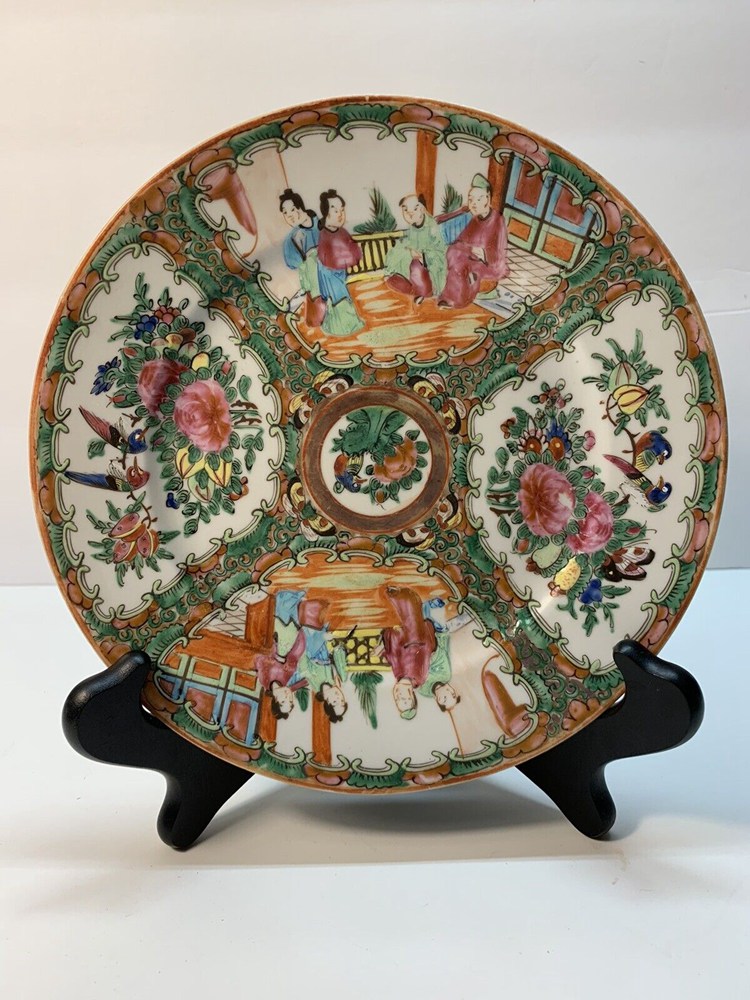
This pattern does not consist of a central medallion but rather depicts familial and courtly scenes pursuing everyday activities.
The border of the panels is decorated with flora and foliage. This type of pattern is the earliest design of the 18th century.
Rose Canton
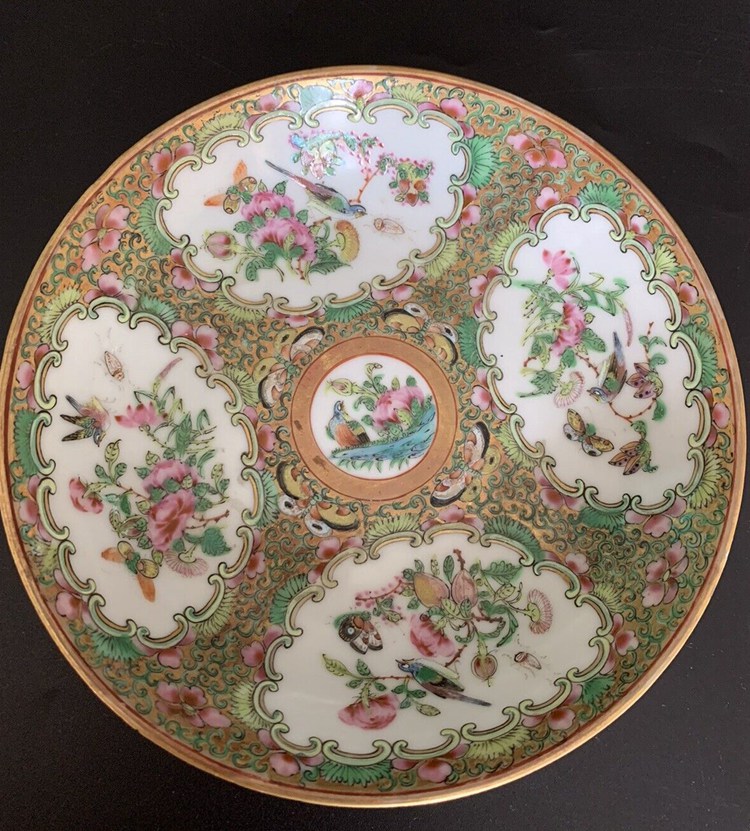
This pattern is the third most popular one, and it depicts only flora and fauna.
There is no fixed pattern for this sort of design as it is seen in panels and also in a free-form arrangement.
However, there are sub-categories to this pattern which are discussed below:
- The Bouquet Of Flowers: This pattern has a bouquet of flowers neatly tied with a ribbon or decorated with bows as the central medallion, and this design is dated back to the second half of the 19th century.
- The Garden: This pattern features landscapes with flowers, birds, butterflies, and other foliage.
- The Sacred Bird & Flowers: This pattern features long-tailed birds, insects, flora, and fauna arranged in either small groups or a random pattern. This also dates back to the second half of the 19th century.
- Millie Butterflies: As the name suggests, it consists of butterflies in prominent colors or black or yellow. It has a central panel of butterflies and flowers decorated by a border of more butterflies.
- Cabbage Leaf/ Bok Choi: This pattern consists of green cabbage leaves surrounding a central medallion that is usually a Chinese symbol often featuring butterflies. This design made its debut in the third quarter of the 19th century.
Dating A Piece
As the saying goes, ‘practice makes a man perfect’ hence, the more you handle Chinese porcelain, the more you’ll become aware and notified of the details and intricacies.
This will help you in the process of dating a piece accurately.
Attending auctions, talking with experts, and going to museums would also help beginners to familiarize themselves with the history of pieces.
Here are some key features one must know to date a piece:
The Key Details
Paying attention to the details is crucial.
The early pieces consisted of intricate designs that consisted of distinct features. For example, the birds’ feathers were more defined, the hair strands were outlined with gold, and the expressions were more discernible.
The pieces that came out later lacked details and became less defined.
With new printing techniques introduced in the 20th century, fewer pieces were hand-painted, and most of them were either stamped or painted on by special tools and utensils. The printed pieces are referred to as designer pieces.
The Colors
Another crucial feature is the intensity of the colors.
The older pieces have dull colors while the newer pieces are brightly colored generally, but one color, in particular, has evolved over time, i.e., the orange color.
The orange color used nowadays is more acidic and vivid than the soft, rustic color used in antique pieces.
The original Famille rose pieces contained subtle variations in shades of colors, while the newer ones are mostly one-dimensional.
The gilded borders are subjected to the most wear and tear in antique pieces, so if the borders look fresh and newly painted, then you can suspect them to be recent archives!
The Weight
In the early 1800s, porcelain had a sturdy weight to it as compared to the lightweight porcelain produced nowadays.
Antique porcelain also has more pitting than its later counterparts.
Marks
Chinese porcelain before 1891 was largely unmarked.
After 1890, the United States introduced a tariff act in which all import items had to be marked with the country of origin.
Therefore, pieces produced after this act were marked in red at the bottom of the article, with the word ‘China’ engraved on them in capital letters.
After 1919, all pieces that were intended for the US market were required to be marked with the words ‘Made In China’.
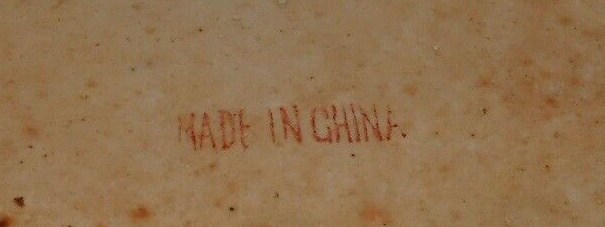
Some pieces were also marked with a Chinese symbol or a dynasty mark, but don’t let that fool you, as those pieces also date back to no later than the 1950s.
Some marks were also filed off to pass them off as antique pieces!
Not only that, but the samples that were not intended to be sold in the American market were robbed of their marking, even in the 20th century!
Hence, it is essential to understand that marks are not the only thing confirming the dating of a piece.
In the 1960s, the porcelain trade in Hong Kong was popularized, and the demand was so high that undecorated porcelain had to be imported from Japan and painted in Hong Kong. Such pieces were marked with ACF or YT at the bottom.
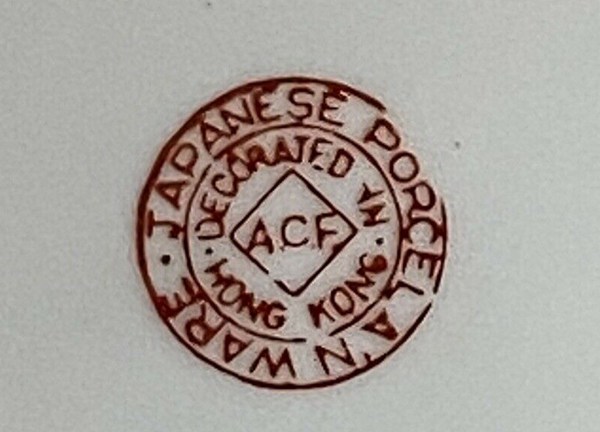
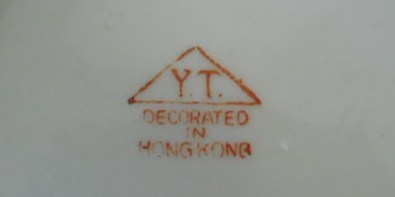
Another production line began in the 1950s in Macau.
These pieces were usually manufactured elsewhere but painted in Macau.
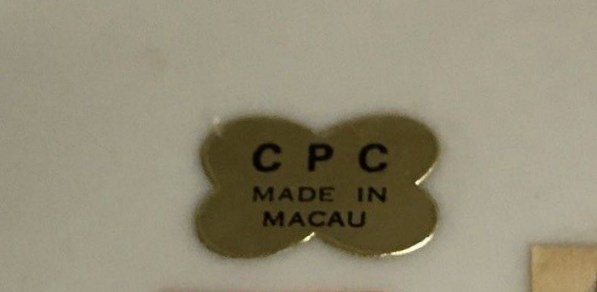
They bore a made in Macau mark at the bottom.
They were rather inexpensive and also differed from the traditional Chinese designs, with the borders painted in a Middle Eastern design.
Symbols In Chinese Porcelain
Chinese porcelain enthusiasts dedicate a lot of time to deciphering the symbols used in the Famille Rose, for example, peonies represent beauty and richness, whereas butterflies represent social happiness and love.
Some other symbols and their meanings are listed below:
- Crickets: Considered as a good luck charm and symbolizes longevity.
- Magpies: Symbolizes the good omen of fortune.
- Dragons: Represents strength and health.
Value
The oldest pieces that are more detailed and finely crafted can be worth tens of thousands of dollars compared to the newer counterparts, but that does not mean that the mid or early-20th century pieces don’t hold value.
The smaller pieces, such as tea cups or saucers from the early 20th century, are deemed vintage, and beginner collectors can easily get their hands on these for as little as 100 bucks in online auctions.
How To Spot An Antique?
- Look for coloring that has different hues and shades to it. Also ensure that the colors are luminous, not harsh.
- Pay attention to the details and intricacy. More detailed and tight intricate patterns are older. Notice the gilded hair outlines or the expressions painted.
- The larger the piece, the more value it has. Unique shapes also tend to be older.
- Examine any scratch marks at the bottom or rough patches as sellers often file the markings to make the piece appear older.
- The older the piece, the more it is worn out. Spot any signs of wear and tear over the centuries such as cracked enamel, filled-in pieces, or dull or faded colors. If the enamel is flakey then it is unstable and will break easily so avoid buying such pieces.
- For buying online, don’t be afraid to ask the seller for more detailed pictures as the secret lies in the details.
Tips On Buying Rose Medallion China
First off, you need to familiarize yourself with the pieces out there in the market and the value they are being sold at.
Auctions on eBay are a good place to start as you can see from the completed auctions what type of pieces are sold and how they are priced.
Using different word combinations such as a rose medallion, rose medallion china, and rose china will give you a different variety of porcelains to choose from.
Then once you’ve locked your eyes on a piece, you should conduct a second search on a search engine to find out more about it.
Most people group such sort of porcelain articles with other inexpensive ones. Therefore, there’s a high probability that they might not be aware of its real value!
You should always try to negotiate the price. Who knows, you just might get a steal!
Takeaway
Whether it’s for collecting or adding a little dash of class to your home, Chinese porcelain is a way of celebrating a tradition that has been carried on for centuries and keeping alive the art and the craftmanship used in the making.
You don’t need thousands of dollars to buy an antique Ming Dynasty vase when you can get antique and classy Rose Medallion China for just a few hundred bucks.
Frequently Asked Questions
Are my old China dishes worth anything?
Blue and white china dishes can be of value to some collectors. Other pieces’ value depends on the floral patterns, designs, and styles.
If they are in good condition, they can be sold off as modern vintage for a handsome amount as well.
Is Rose Medallion still being made?
Yes, Rose Medallion is still being made, but the newer ones hold no significant value to collectors.
Can I eat off my Rose Medallion China?
To preserve the integrity of your antique China porcelain, it is advised not to use it as a regular household item.
